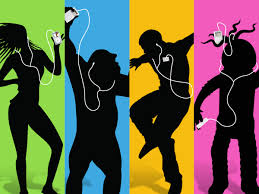
Although it is known that social networks have increased and stimulated mental problems as well as disorders in teenagers, children, and young people in an exponentially large way, no measures have been taken to filter this problem. A new double-edged tool has even emerged: digital beauty filters. One of the best-known and most popular platforms for these filters is Instagram, although it is not the only one that uses them, currently, almost all social networks or digital applications have them.
The impact that these have had on the population is notorious, but especially on children and adolescents. Today’s teens are exposed to a myriad of absurdly unreal information and stereotypes. It is true that for many years, sex and sex appeal have been used to sell, especially objectifying women. Currently, the standards of beauty are ridiculous, and although as adults one can identify them and recognize that they are wrong, children and adolescents affect them in different ways. It is no longer just about models, or artists, or beauty standards in other people, but now, beauty filters use are used as a guide of how you should see yourself if you comply with these beauty stereotypes, from smoother skin, clearer, more swollen, large lips and eyes, small noses, high cheekbones, distortion of the proportions of the face or body, creating insecurities about their own body generating anxiety or depression due to the social pressure they currently experience.
It has been found that the suicide rate increased dramatically to 70% in teenagers between 15 and 19 years of age. As well in the United States, hospital admissions of pre-adolescents and children increased by 189% from the age of 10 due to self-harm.
The beauty filters promoted by social networks have amplified psychological problems in young people, many of which they will have to deal with for the rest of their lives. From eating disorders, dysphoria, depression, or anxiety.
Although there is real data that supports the damage they are doing to the new generations, not only from psychological problems, or bodily injuries but also suicides because of the complexes that the platforms have developed, they have not regulated their use. On the contrary, they have improved and implemented them in any type of platform or tool that uses a camera.
There is no regulation of social networks or the digital world in young people today since they are pressured to use them. Even in schools, children are exposed to the digital world from an early age since technology and digital platforms are essential for their education.
It makes one wonder if criminals are really the creators of these platforms, these filters, the content creators, the ridiculous and currently exulted beauty standards or if we as a society are promoting the abusive use of them regardless of the consequences in minors since they are the main consumers of this.
How high does the rate of suicide and self-harm in adolescents have to rise for not being able to meet the beauty standards that we have imposed on them to decide to stop with digital filters? How much of our own insecurities and dependencies are we instilling in children through tools that we create and encourage their use?
Sources:
Spanish:
https://smoda.elpais.com/moda/actualidad/dilema-redes-sociales-netflix-documental/
https://www.womenshealthmag.com/beauty/a33264141/face-filters-mental-health-effect/







